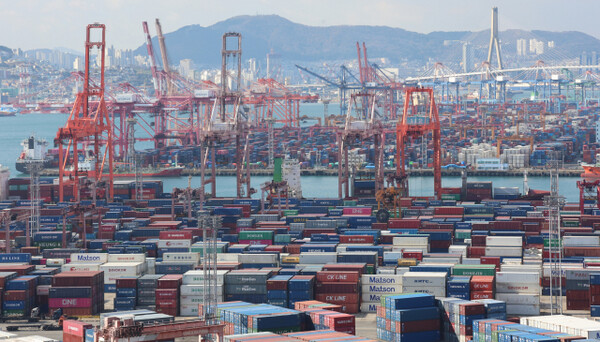Export Sentiment Index Hits Four-Quarter Low
The Korea International Trade Association's International Trade Research Institute has unveiled the "2025 Q1 Export Business Sentiment Index (EBSI) Survey Report," painting a grim picture for South Korea's export sector. The EBSI for the first quarter of 2025 stands at 96.1, marking the first time in four quarters that it has fallen below the baseline of 100, indicating a pessimistic outlook among exporters.

Key Sectors Face Significant Challenges
The survey, which encompassed 1,010 companies with export performance exceeding $500,000 in the previous year, revealed substantial challenges across various sectors. Home appliances recorded the lowest export sentiment at 52.7, largely due to declining demand in key markets like North America and the European Union (EU). Semiconductors, South Korea's largest export item, also showed a bleak outlook with an index of 64.4, attributed to increased competition from Chinese generic DRAM exports.
Other sectors struggling include steel and non-ferrous metal products (64.1), medical, precision, and optical instruments (74.8), agricultural and marine products (77.7), electrical and electronic products (85.3), textiles and clothing (87.9), machinery (91.9), wireless communication devices and parts (94.0), and petroleum products (98.9).
Few Bright Spots Amid the Gloom
Despite the overall pessimistic sentiment, five items show a relatively bright export outlook. These include ships (146.6), daily necessities (137.9), automobiles and auto parts (130.7), the chemical industry (121.5), and plastic, rubber, and leather products (100.5), which are expected to benefit from the policies of the second Trump administration.
The EBSI for individual items in the first quarter of 2025 highlights deteriorating conditions in nine out of ten categories, including import regulations and trade friction (74.5) and export product manufacturing costs (82.7). Only the export price index (106.2) is projected to improve, surpassing the baseline.
Huh Seul-bi, a researcher at the Korea International Trade Association, noted, "Major export companies appear to be deeply concerned about the potential worsening of the trade environment following the inauguration of the second Trump administration."









Comments